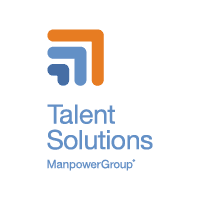As UK organisations experience the tightest labour market in 16 years, and more than 3-in-4 employers report difficulty securing workers, businesses must find new ways to hire the talent they need. Staffing as a Service (SaaS) aims to resolve many of today’s and tomorrow’s recruitment problems faster and more cost-effectively than traditional hiring methods.
Read on to discover more about this innovative solution and how it can help your business prosper when top talent is tough to find.
In a tight talent market, recruitment as usual is not an answer
Since early 2020, the UK labour market has been struck by a series of violent convulsions. Initially stunned by a pandemic that brought job cuts, furloughs, and economic uncertainty, businesses were immediately hit again by the Great Resignation, then by an acute talent scarcity as the number of job vacancies surpassed the number of unemployed for the first time since records began.
Now, even though the economy has slowed and hiring demand has somewhat cooled, securing and retaining best talent still remains difficult – especially for organisations without ‘big brand’ recognition, and particularly so in IT and Tech, where 83% of employers reported difficulties in hiring talent.
As the average organisation’s transformation strategy has accelerated by up to six years, the struggle for talent has left many businesses fishing in the same resource pools, facing unprecedented competition for top talent and struggling with the fact employees now wield the power to choose where, when, and how they work, are demanding greater input recognition, want more opportunity for career progression, and need increased well-being at work, both emotional and physical.
Combined, these issues have created a perfect hiring storm, with traditional recruitment measures unable to provide the answers most employers need. Uncomfortable as it may be for some organisations to admit, the truth is that recruitment by the same old playbook is no longer working and that it’s time to hire differently. In 2023, companies must move from old-fashioned and inefficient reactive hiring practices to proactive demand planning seen through a total talent-management lens if they wish to achieve their recruitment goals.
Knowing what talent you will need tomorrow is critical to success today
In the fourth quarter of 2022, UK employers were reporting a positive 25% hiring outlook – proof that competition for best talent will remain fierce. However, organisations need clear sight of their current and future talent pool if they are to plan successfully. Unfortunately, businesses often lack the necessary data and insights to perform accurate talent forecasting, plan their labour demand, build a global talent strategy, or secure top talent access whilst still paying attention to DEIB (diversity, equity, inclusion, belonging) needs.
For many organisations, scaling their internal resources to provide these essential faculties could be problematic. However, Staffing as a Service (SaaS) provides the necessary data and insights as part of the service package – using critical market knowledge gained from thousands of sources and across many sectors to build a future-forward workforce, as well as to develop strong leadership and coach emerging talent. Instead of leaving businesses to struggle with their future workforce needs, SaaS outsources the risks and responsibilities to attract and manage a talent pool of short-term and long-term assets away from internal HR departments, leaving organisations free to concentrate on other areas of their business.
Meeting short, mid and long-term talent needs to keep the pipeline full
Building an optimal workforce requires recruitment focus now, tomorrow and into the distant future – a short, mid and long-term strategy. However, businesses will typically concentrate on their hiring for the here and now, and hope for the best for the future – a strategy that all too often leaves the organisation suffering on all three fronts:
In the short-term: struggling to supplement existing resources, (sometimes for a single project only), failing to build an attractive culture, and disregarding the insights they need to plan the future skills they will need
In the mid-term: unable to replenish retirees or employees leaving the workforce at the right cost point and in a timely manner – a situation that often leads to overpaying for last-minute services and reduced candidate selection
In the long-term: failure to create a sustainable sourcing strategy and to locate and designate suitable delivery centres – leaving businesses vulnerable to supplier capacity issues and moving from one high-cost resource to another.
In contrast, SaaS can best determine the roles an organisation needs, then fill those gaps from an inventory of on-call consultants or by using real-time market data to conduct a refined search. This drives the goal of an optimal workforce, saves time, reduces recruitment costs and provides better access to scarce skills.
SaaS builds on a matrix of current and future talent needs to allow proactive role planning and fulfilment. The plan is fulfilled with a tiered approach: For the short-term, supplemental hiring options such as ‘rent to buy’ give organisations the chance to understand and develop talent before considering their long-term engagement – and alleviating pressure as they shape an attractive culture. In the mid-term, development programmes enhance existing talent to replenish workers exiting the business and ensure there are no gaps in the overall talent mix. For the long-term, talent forecasting enables a sustainable sourcing strategy and identifies resource centres to deliver best candidates based on the business’ operational plan.
Staffing as a Service – an agile and cost-effective talent solution
Staffing as a Service is an innovative framework that drives collaborative behaviour. Many organisations are seeking a talent solution where they work in partnership with the supplier, allowing them to bring market knowledge, resourcing expertise, and innovative engagement models to the table. As recruiters take more ownership of the talent solution, actively managing and driving the output of the workforce to drive efficiency, so it is increasingly resonating with clients who adopt the Build, Buy, Borrow and Bridge talent strategy and who recognise that all these approaches can be delivered through a single service management engagement.
Staffing as a Service is helping companies of all sectors and industries attain business innovation. The solution outsources risks and responsibilities to attract, build and manage a talent pool of skilled resources for specific project requirements. As an agile and cost-effective talent solution that provides the best talent available in the marketplace, SaaS guarantees fast and flexible results as it can be scaled up or down, mirroring peaks and troughs in demand.
Experis – leading from the front in SaaS
The race for top talent is far from over and businesses must adopt a proactive hiring strategy to stay ahead. With more than 100 offices in over 50 countries and 1.2 million candidates in our database, Experis are a leading provider of SaaS solutions.
For more information, please contact us.


